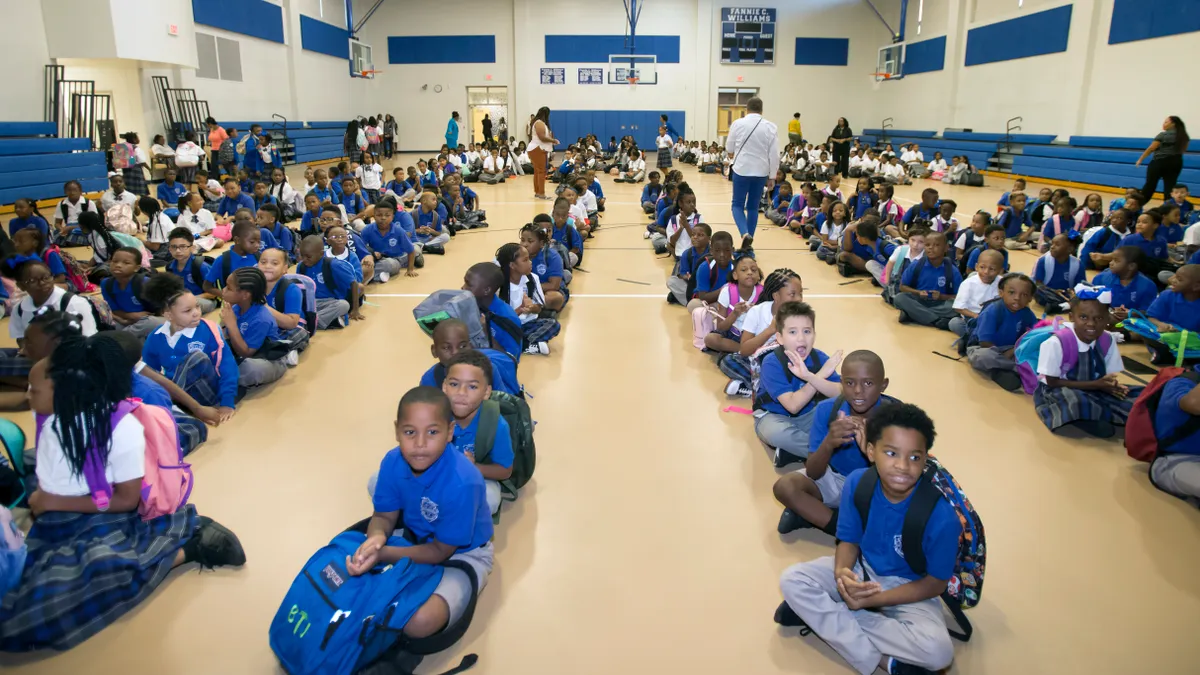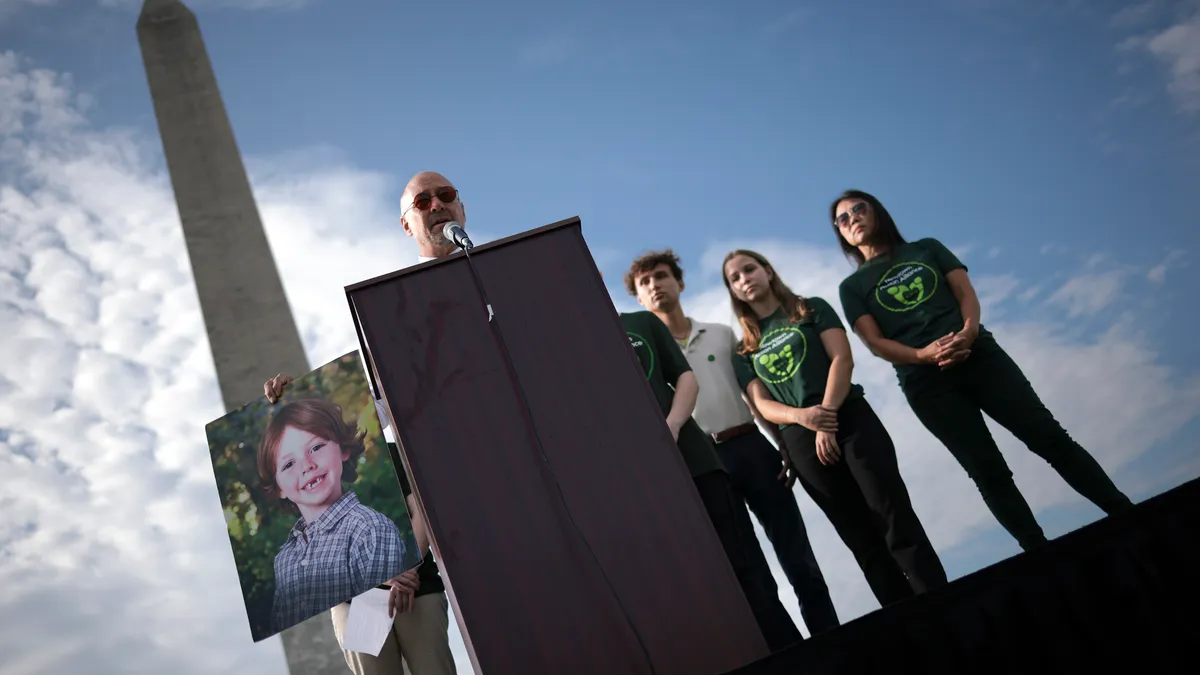Highlights
Significantly fewer students:
Student enrollment among the city's public schools totaled 48,545 for the 2017-18 school year, a number that pales compared to 2000 U.S. Census data that shows 112,214 people between ages 5 and 19 that year.
Starting almost from scratch:
Nearly all of the city's 128 schools were damaged or destroyed by Hurricane Katrina in 2005, and the city of New Orleans operated 87 public school sites during the 2017-18 school year, according to the OPSB.
Completing the transfer of power:
Before the remaining majority of New Orleans schools were transferred to the OPSB this summer, the board managed 42 public school sites during the 2017-18 academic year.
After Hurricane Katrina struck New Orleans in 2005, it took many years to replace what vanished. The city had learned its lesson from the hurricane the hard way, but officials used its widespread devastation to construct better buildings and systems that were as good and as strong as they should have been in the first place.
The same goes for the city’s schools. In fact, some might go as far as to say few things have changed more in the post-Katrina era than its public school system. In 2005, before the storm, Orleans Parish public schools had the second-lowest performance score — on a scale of 100, it received a score of 56.9, or “academically unacceptable” — of all 68 parishes in the state. Caroline Roemer, executive director of the Louisiana Association of Public Charter Schools (LAPCS), called it “abysmal.”
But when the storm raged through, taking most of New Orleans’s schools with it, “there was no place to go but up,” she said.
“It literally shut down a city, which therefore shut down a school system,” Roemer said. “And it gave us an opportunity to really rethink how we were delivering education to New Orleans families and their children."
Thirteen years later, the system is barely recognizable. The Recovery School District (RSD), a state entity created in 2003, swept in after Katrina and brought New Orleans’ underperforming schools under its wing, aiming to turn them around and “deliver on a promise to give quality education to all New Orleans kids,” said Patrick Dobard, CEO of nonprofit New Schools for New Orleans (NSNO), which works with community partners to advocate and get support for better education.
“Post Katrina, people saw the charter law as an opportunity to hit a reset button for New Orleans, which was struggling academically,” Roemer said. “Charter schools became a vehicle for change, because it was something that could quickly develop, but it also offered the opportunity to make decisions as close to classrooms as possible.”
‘This is the right thing to do’
For several years, the RSD governed most of the schools in New Orleans, running as a traditional school district while authorizing the autonomous schools that met its uniform accountability and equity standards — and cracking down on those that didn’t. In doing so, most schools became charters, and the district became the nation’s first all-charter district in 2014. At the same time, other local entities joined the effort: Organizations like the NSNO and LAPCS stepped in to support the districts, advocate for school choice policies, and help fill in the gaps.
The all-hands-on-deck effort, beginning as an idea with an uncertain future, was a success. Between 2004 and 2017, the percentage of students who graduated high school within four years jumped from 54% to 73%. High school graduates who enrolled in college went from 37% to 61% during the same time period. Only 33% of students earned grade-level scores on state assessments before Katrina, and by 2017, it had risen to 59%.
“The thing that made me confident in our ability to do this well was the investment of our leaders in everything we created,” said RSD CEO Kunjan Narechania. “The majority of them came together and said, ‘This is the right thing to do for the system.’”
In May 2016, the passage of Act 91 forced the unification of the RSD and the OPSB within two years, molding it into one school system governed by the OPSB. And on July 1, it came to fruition when the state officially handed the district to the locally elected Orleans Parish School Board.
“It was pretty seamless, I think,” said Dobard, who served as RSD’s superintendent from 2012 to 2017. “We were already normalizing the way to interact and flow together [with the OPSB] to the point that July 1, quite frankly, was anticlimactic.”
Looking forward
The system has paved the way for charter school education, but that’s not to say there haven’t been bumps in the road, or that there isn’t more work to be done. Like school districts across the nation, New Orleans schools still struggle to get adequate funding, recruit and retain quality teachers and keep up with federal regulations and standards, including those under the Every Student Succeeds Act.
“And we always need more resources to make sure that all our kids have the opportunity that they deserve,” OPSB Superintendent Henderson Lewis wrote in an emailed statement.
Another challenge, Roemer said, is dealing with those who root against school choice and charter schools. They say student performance in the system is still low, citing metrics including the district’s annual performance score. With the exception of 2016 — when the RSD and OPSB collectively received a B grade — New Orleans schools have not received higher than a C on the performance report card.
But most of these schools started off near an F, Roemer said, and a single day of standardized testing shouldn’t be the sole indicator of how well a school is doing. As a nontraditional district being held to the same federal accountability standards as typical school systems, New Orleans’ next steps are to figure out how to navigate these circumstances and close the gap from a C grade to an A.
To Dobard, what catapulted off a devastating tragedy had a massive silver lining for New Orleans’ educational system.
“Unfortunately, it took a catastrophe,” he said, “but we’ve truly taken advantage of that catastrophe and turned it into something much better than it was before."
Read More
-
Years after Hurricane Katrina destroyed New Orleans Schools, a district leader shapes the ed system's turnaround
By Jessica Campisi • Oct. 15, 2018 -
'Strategic leadership' crucial for school improvement, says turnaround expert
By Linda Jacobson • Aug. 1, 2018







 Dive Awards
Dive Awards






